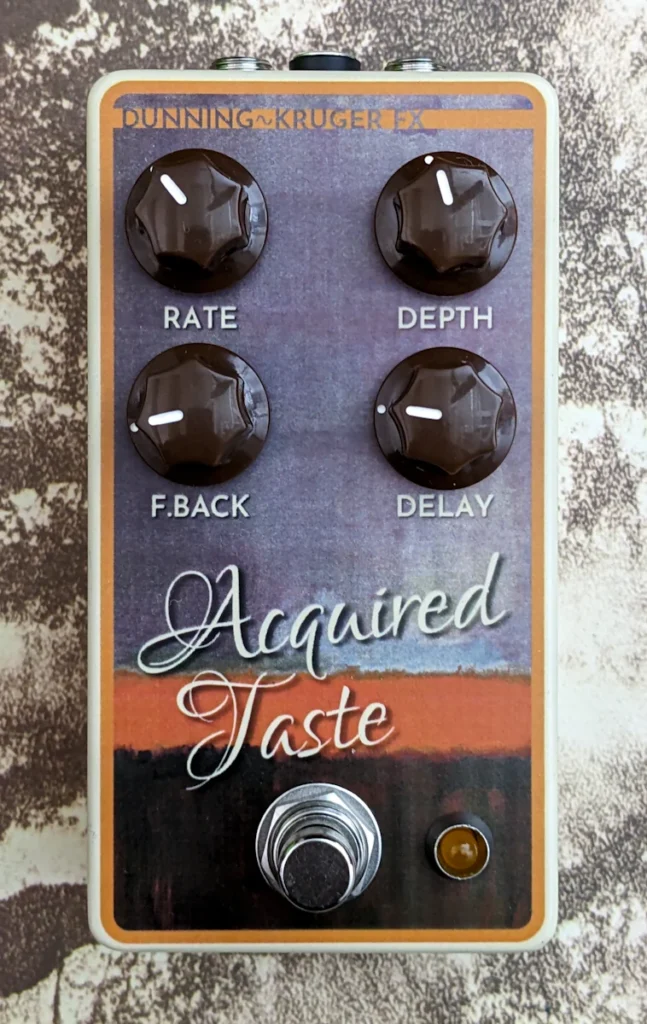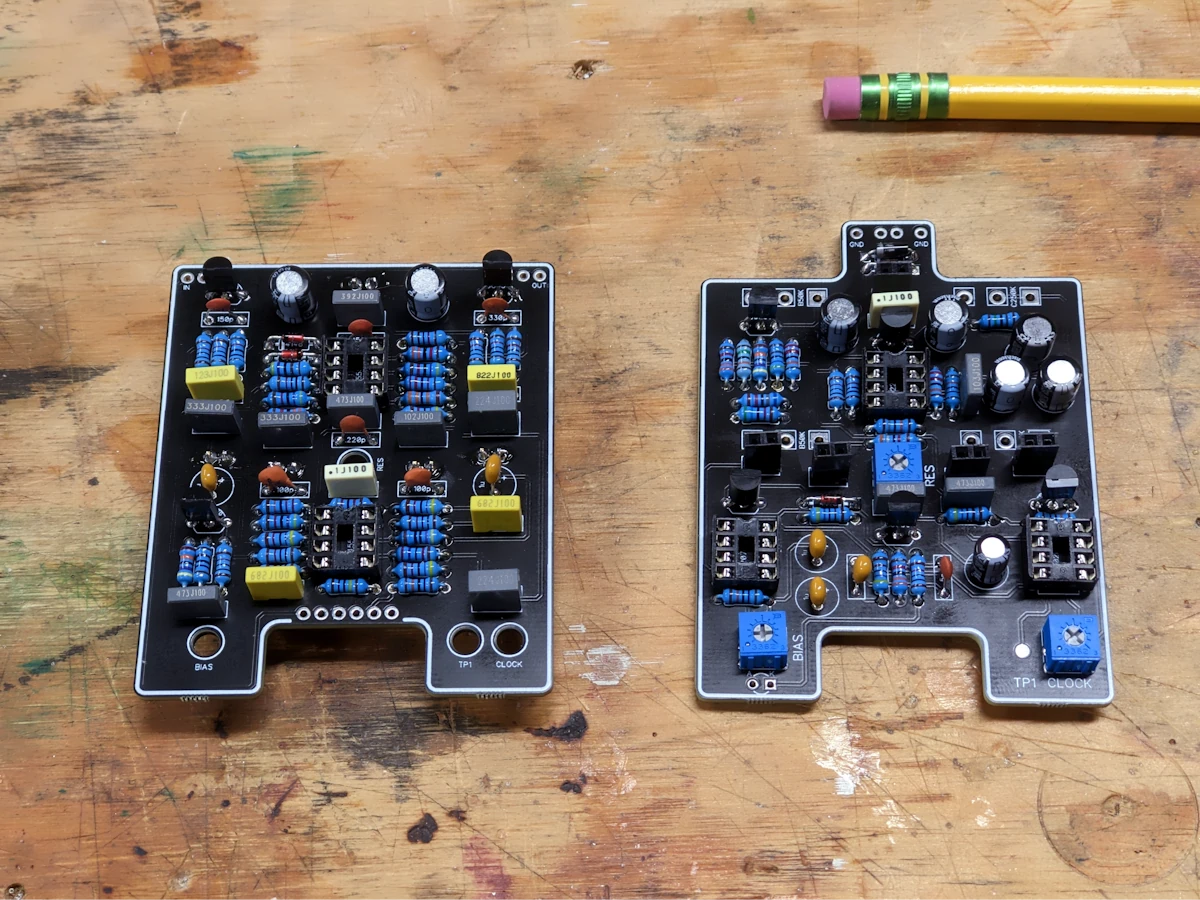

Maybe you just haven’t tried a “good” flanger
The durian fruit looks like a child’s drawing of a porcupine and smells like an aged emesis of onions and carrion. A shot of the Chicago delicacy “Malört” is like sucking on a Ricola while smoking a clove in the tampon aisle of a Walgreens. LeRoy Neiman paintings exist.
No one is born enjoying these things.
While perhaps not rising to the level of natto (Japanese rotten soybeans) or salmiakki (Finnish ammonium chloride licorice), flanger is a divisive effect. The hardboiled journalists at reverb.com wrote a piece on flangers entitled “The Second Most Hated Effect,” putting them ahead of only ring modulators. Redditor bluezDentist69 said of them, “If I wanted my 1948 Les Paul, Maxine, to sound like a passing jet, I would have taken her to the aerodrome and traded her in for a Gulfstream!” On the other hand, there are flanger apologists out there making content with sentiments like, “No, really, flangers are okay.”
My personal interest in flangers has waxed and waned. One of the first pedals I ever bought, before I knew anything about anything, was a Boss BF-2, and I genuinely loved it. More recently, I became mildly annoyed with effects that have a blatantly obvious LFO swoosh (hence my fascination with motionless chorus), and flangers are potentially among the swooshiest. Of course, you can always turn down the regen knob and make it sound less like a sci-fi soundtrack. I thought that if I built one, I’d be able to learn a little more about them and adjust the amount of “self-destruct sequence initiated” sound.
Details
I learned almost nothing new about flangers from this exercise.
There is debate about who first came up with the idea of a flanger effect, but let’s assume that you have one reel-to-reel tape machine operated by Les Paul and a second one operated by Ken Townsend from Abbey Road. If they were to both play the exact same recording at the same time, and then Ken lightly dragged his finger on the flange of his tape to slow it down a hair, the two would become out of sync and introduce comb filtering, hopefully to the point where Ken could get John Lennon to stop complaining about having to double track vocals. That’s flanging. Mostly.
The electronic version splits the original signal into two, slightly delays one side, and varies the amount of delay with a low frequency oscillator (LFO). This is exactly the same as a chorus effect except that that amount of delay is usually smaller in a flanger. Most flangers additionally have the option to send some of the effected signal back through to accentuate the effect, which is often labeled as “regen” (regeneration) or “res” (resonance) or “feedback.”
I’ve always found the idea of building a flanger to be daunting. Most of the effects that I’ve built that include a delay component use the PT2399 chip, which is the self-contained karaoke-machine delay-on-a-chip that I’ve talked about numerous times. That chip simplifies a whole lot of things for a home builder, but it’s not exactly a powerhouse and can’t approach the delay times needed for a flanger, under 15ms or so. It can barely get to the sweet spot for chorus. That leaves the options of using a more serious digital processor, like an FV-1 (but then I’d just be grinding through code that I don’t really understand) or going full-analog with bucket brigade devices (which can easily do tiny delay times but are rare, expensive, and employ a method of operation that is completely obtuse to me). Based mostly on the fact that I had leftover known-good BBDs from the Okay Chorale, I decided to go analog.
I’ve been on a kick of doing my own vero layouts, because it’s an interesting puzzle and feels way more mad scientist, but I’m not a purist. Or at least I frequently tell myself that I’m not a purist in an effort to overcome my overwhelming inclination toward acknowledging the obvious hierarchy of things. For the Acquired Taste project, I bought a pre-made printed circuit board to deal with the high parts count of a flanger and offload some of the deeper thinking on how BBDs work, but still hoped that I’d be able to examine the schematic and figure some things out. Of course, it didn’t come with a schematic. It didn’t have build documentation at all—it only had a parts list, which focused mostly on the physical height of capacitors since it’s a stacked board and doesn’t have much vertical clearance. There was no indication of how to adjust the three trimmers. I even was forced to use the ridiculous 3D3P circuit board adapter thing that came with it because there is no explanation about the six unlabeled pads on the PCB that connect to the switch, and at that point I was too frustrated to attempt to reverse engineer them. Although if I’d known how annoying it was going to be to get the adapter to physically fit in the enclosure and align with the pads, I would have invested the time.
I built it though. It was neither the learning experience nor low-stress diversion that I had hoped it would be, and it breaks little new ground since I didn’t trust the one prototype schematic that I could find for it and it remains a straight BF-2 clone, but it flanges.
Vital Stats
Sound
It’s a BF-2.
In the following sound sample, there is a brief yet tedious attempt at intuiting 80s style “hard rock” (this is like 283rd take and I was just done…I do not and clearly cannot play hard rock, but I did like the underlying sound despite not hitting any of the notes). This crime was committed with the Coronacaster into the Divine Smite into the Acquired Taste. The rest is decidedly less hard rock and has the Acquired Taste on everything, including a tiny touch on the master channel.





